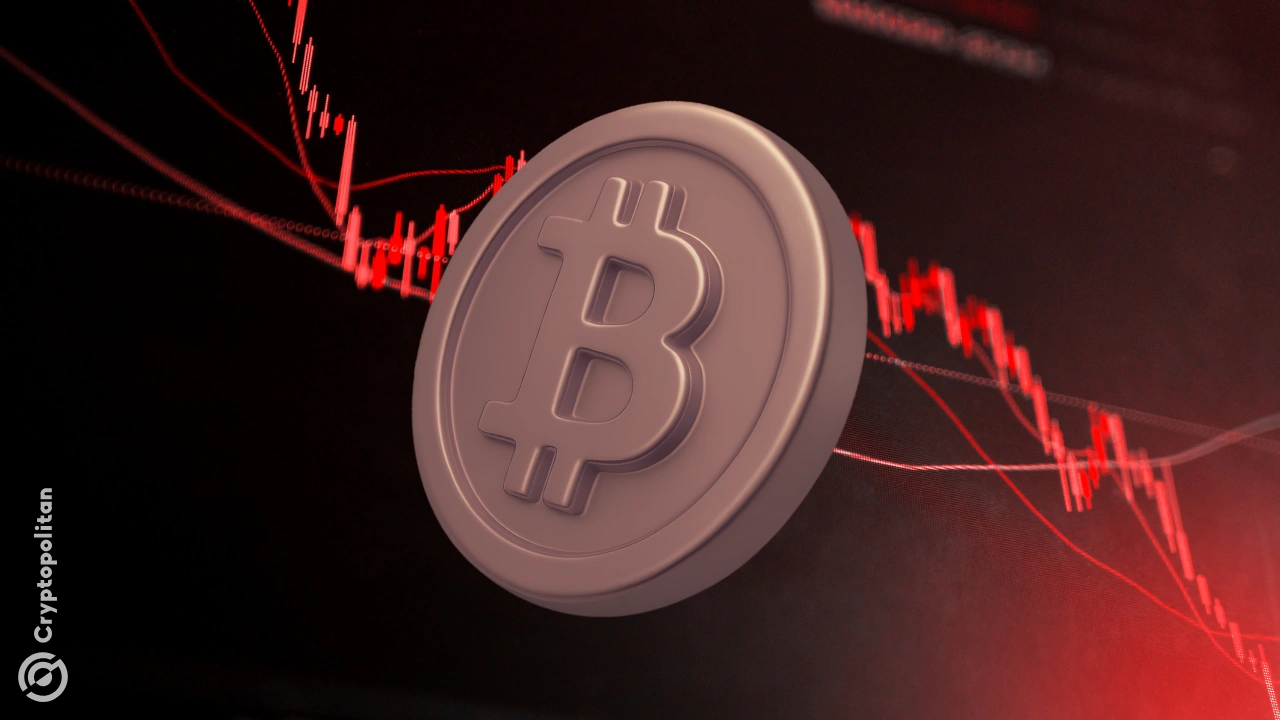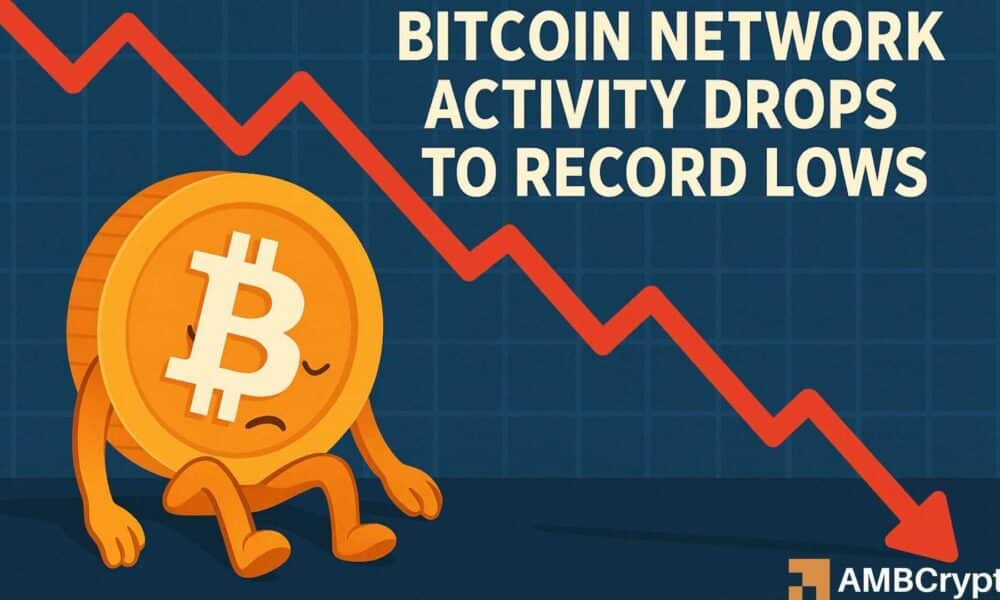source:Glass node;Compiled by: AIMan@
summary:
With the continuous restructuring of global trade relations, the macroeconomic environment remains full of uncertainty. This uncertainty has exacerbated volatility in the U.S. Treasury and stock markets.
Faced with the severe economic situation, Bitcoin hit its biggest drop since the cycle. despite this,This is still within the typical range of previous pullbacks during the bull market. also,The median decline in this cycle is still an order of magnitude lower than before, highlighting its demand situation being more resilient.
The liquidity of the entire digital asset ecosystem continues to tighten, reflected in the decline in capital inflows and the stagnation of stablecoin growth。
Investors are under tremendous pressure and are currently facing the largest unrealized losses ever. However, these losses are mainly concentrated on new investors entering the market, while long-term holders generally remain profitable.
Macro uncertainty remains widespread
The macroeconomic landscape is filled with huge uncertainty, and the Trump administration is trying to subvert and reorganize the status quo of global trade relations. Currently, U.S. Treasury bonds are collateral and foundations of the financial system, while 10-year U.S. Treasury bonds are considered as the benchmark risk-free rate.
A key goal of the government is to lower the 10-year Treasury yield and has achieved initial results in the first few months of the year, with yields falling to 3.7% as the market sells out widely. However, this goal was just a flash in the pan, with yields then soaring to 4.5%, erasing the progress and causing huge volatility in the bond market.
Source: FRED
We can quantify disorderly behavior in the bond market through the MOVE index. This indicator is a key measure of pressure and volatility in the bond market, and it is based on the implied 30-day volatility of the U.S. Treasury market based on the price of options for different maturity.
According to this standard,U.S. Treasury volatility has risen sharply, highlighting the extreme uncertainty and panic among investors in bond markets。
Source: Tradingview
We can also use the Volatility Index (VIX) to measure the level of turbulence in the U.S. stock market, which measures market expectations of 30-day volatility in the U.S. stock market. The volatility of the bond market is also significantly reflected in the stock market, with VIX currently recording volatility values similar to those during the 2020 COVID-19 crisis, the 2008 global financial crisis, and the 2001 Internet bubble period.
Volatility in the basic collateral of the financial system often leads to capital pullbacks and liquidity conditions tighten. Given that Bitcoin and digital assets are one of the most liquid-sensitive tools, they are naturally affected by volatility and risky asset drawdowns.
Source: FRED
The performance of hard assets remains impressive amid this turmoil. As investors flock to traditional safe-haven assets, gold prices continued to soar, hitting a new high of $3,300. Bitcoin was initially sold to $75,000 along with risky assets, but has since recovered its gains this week and rebounded to $85,000, which has been flat since the volatility.
As the world adapts to changing trade relations, gold and Bitcoin are increasingly taking center stage as global neutral reserve assets.Therefore, it can be said that gold and Bitcoin showed a concerning signal in the last week's trend.
Bitcoin remains strong
While Bitcoin is still trading within the $85,000 region, which is impressive, the volatility and retracement of this leading digital asset has remained intensified in recent months. The asset hit its biggest drop since the 2023-25 cycle, with the largest retracement down 33% from its historical high.
However,The decline is still within the typical range of previous pullbacks during the bull market. Bitcoin usually experiences over 50% sell-offs in previous macroeconomic events such as last week, highlighting the degree of solidity of modern investors' sentiment towards the asset in adverse circumstances。
To quantify the elasticity of the current cycle, we can evaluateRolling median retracement of all bull market structures。
2011: -22%
2011-2013:-18%
2015-2018:-11%
2018-2021:-19%
2022 and beyond: -7%
The median retracement in the current cycle is much smaller than in all previous cases. Since 2023, the retracement has been small and is essentially more controllable.This suggests that demand conditions are more resilient and that many Bitcoin investors are more willing to continue holding during market turmoil.
Liquidity continues to shrink
We can also evaluate how macro uncertainty affects Bitcoin’s liquidity status.
We can measure the internal liquidity of Bitcoin through the implemented market capitalization indicator, which calculates the cumulative net inflow of capital into digital assets. The market value has been achieved. Currently trading prices reach an all-time high of $872 billion, however, the capital growth rate has been compressed to just +0.9% per month.
In a challenging market environment, it is impressive that capital flowing into the asset continues to grow positively.Given that the rate of new capital inflows into the asset is slowing, it also indicates that investors are currently under low willingness to allocate capital in the short term, which means risk aversion may remain the current default behavior.
The realized profit and loss indicators are the input components of the realized market capitalization, allowing us to measure the difference between the acquisition price of a token and its value when used on-chain.
Tokens above the acquisition price are considered to lock in realized profits.
Tokens below the acquisition price are considered locked to have realized losses.
By measuring achieved profits and losses in BTC, we can standardize all profit and loss events with the expanding market value during the Bitcoin cycle. Here, we introduce a new variable and further refine it by adjusting volatility (7-day volatility achieved) helps explain the diminishing returns and decreasing growth rates that Bitcoin has experienced as it matures over its 16-year history.
Currently, profit-making and loss-making activities are relatively balanced, which leads to the relatively neutral capital inflow rate mentioned above. It can be said that this reflects the saturation of investor activity within the current price range and will usually enter a consolidation period first when the market tries to find a new balance point.
By calculating the difference between realized profit and realized loss, we can obtain a net realized profit/loss indicator. This metric measures the dominance of the value direction of inflow/outflow networks.
Using the volatility-adjusted net realized profit/loss indicator, we can compare it with the cumulative median to distinguish the two market mechanisms.
Continuously above the median value usually indicates a bull market and net capital inflows.
Values that continue to fall below the cumulative median are often seen as bear markets, and Bitcoin will experience a net capital outflow.
The market usually pushes investors to the brink of extreme pain, often peaking at the turning point of the bull and bear cycle. We can see that the net realized profit and loss of volatility adjusted fluctuates around its long-term median, acting as a means regression tool.
The indicator has now been reset to the neutral median, indicating that the Bitcoin market is currently at a critical decision point and has set limits for bulls to reestablish support levels in the current price range.。
Stablecoins have become the underlying asset category in the digital asset ecosystem, acting as quotation assets in centralized and decentralized trading platforms. Evaluating liquidity through the perspective of stablecoins provides new dimensions for our analysis, allowing us to have a more comprehensive understanding of the liquidity status of digital assets.
The growth of stablecoin supply has continued to maintain positive growth, but has slowed down in recent weeks. This further suggests that broader digital asset liquidity is shrinking, manifested in weaker demand for digital native dollars.
Investor pressure
In the midst of ongoing market turmoil, it is important to assess the scale of unrealized losses currently held by Bitcoin investors.
In measuring the unrealized losses held by the market, we noticed that unrealized losses have reached a new high of US$410 billion during the period when the market fell to US$75,000. When we examine the composition of unrealized losses, we can see that most investors hold a drawdown of up to -23.6%.
The total unrealized losses were greater than the sell-off in May 2021 and the bear market in 2022. However, it is worth noting that for individual investors, the market has experienced more drastic declines, up to -61.8% and -78.6% respectively.
Although there is no realization loss in total (because Bitcoin is a larger asset now), individual investors are facing less challenges now than before the bear market period.
Although the unrealized losses held hit record highs, the proportion of profitable positions in circulation supply is still as high as 75%. This shows thatMost loss-making investors are new buyers after the top pattern appears.
It is worth noting thatProfitable supply percentage is approaching its long-term average. Historically, this is a key area that needs to be protected before the vast majority of cryptocurrencies fall into losses, and is also a key threshold between the bull market and the bear market structure.
A typical feature of a bull market is that profit supply is higher than its long-term average and that this level of support is often found throughout the market.
Historically, bear markets are often accompanied by depth and duration below the long-term average, and frequent declines at this level confirm a decline in profitability.
Similar to the net realized profit/loss indicator, if it can be held, the rebound in the long-term average range will be a positive observation.
As the market continues to shrink, it is reasonable that the absolute scale of unrealized losses is expected to increase. To explain this phenomenon and standardize pullbacks of varying magnitudes, we introduce a new indicator variable: unrealized losses per percentage retracement, which represents the percentage drop in losses calculated in Bitcoin relative to historical highs.
Applying this indicator to the short-term holder population shows that after the reduction depth adjustment, their unrealized losses are already considerable, comparable to the level at the beginning of the bear market.
despite this,The current unrealized losses are mainly concentrated on new investors, while long-term holders are still in a unilateral profitable state. However, an important nuance is emerging: the unrealized losses levels for such groups may rise as recent top buyers gradually become long-term holders.
Historically, long-term holders have not achieved a significant expansion of losses, often marking a confirmation of bear market conditions, although there will be some delays after the market peaks. As of now,There is no clear evidence that this pattern shift is happening.
Summary and Conclusion
The macroeconomic pattern is still full of uncertainty, and the global trade pattern continues to change, resulting in sharp fluctuations in the US Treasury bond and stock markets. It is worth noting that Bitcoin and gold have performed particularly strongly, especially during this challenging time. This may be an exciting signal as the foundation of the financial system enters a period of transformation and change.
Despite its responsiveness, Bitcoin has also failed to resist the impact of violent volatility in the global market, setting the biggest drop since the 2023-2025 cycle. This has greatly affected new market participants, who currently bear the majority of the market losses. However, from the perspective of individual investors, the market experienced a more severe decline in previous cycles, especially during the bear markets in May 2021 and 2022. In addition, mature and long-term investors remain calm on the continued economic pressure and are almost in a state of unilateral profit.
















No comments yet